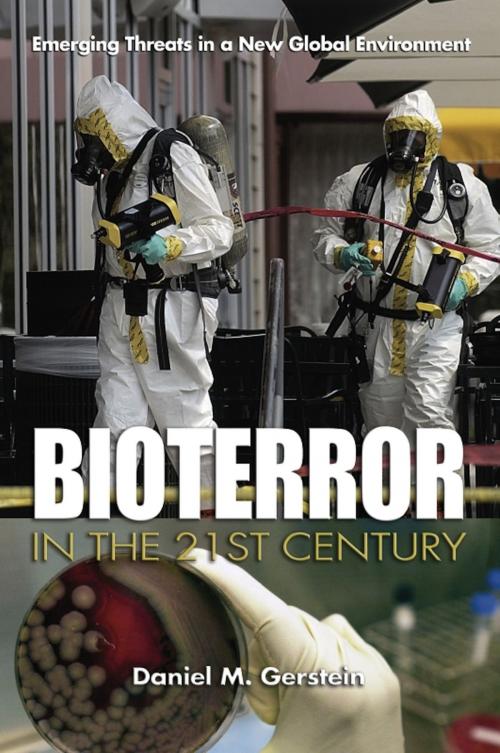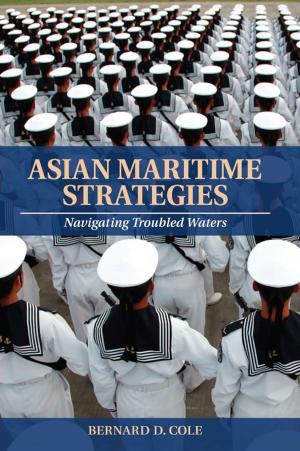Bioterror in the 21st Century
Emerging Threats in a New Global Environment
Nonfiction, Social & Cultural Studies, Political Science| Author: | Daniel M Gerstein | ISBN: | 9781612510200 |
| Publisher: | Naval Institute Press | Publication: | December 7, 2010 |
| Imprint: | Naval Institute Press | Language: | English |
| Author: | Daniel M Gerstein |
| ISBN: | 9781612510200 |
| Publisher: | Naval Institute Press |
| Publication: | December 7, 2010 |
| Imprint: | Naval Institute Press |
| Language: | English |
Daniel Gerstein draws on twenty-nine years of experience in the security and defense sectors to address the threat of bioterrorism. He argues that bioterrorism is a very real threat to humankind due to the 21st century’s confluence of globalization, terrorism and biotechnology. Each of these three components of bioterrorism is experiencing unprecedented -- really exponential growth and when examined collectively, these factors present a potentially serious challenge to both U.S. national security as well as to America’s scientific, organizational and cultural systems.
This change is arguably the most dramatic in the field of biotechnology. As new discoveries are made, the potential misuse of this knowledge for bioterror grows as well. Since 2001 and the anthrax attacks in the United States, the bioterror question has received great scrutiny. Many argue that an Armageddon-like attack is imminent while others argue that the threat has been exaggerated. In this debate, it has become increasingly difficult to separate fact from fiction. While billions of dollars have been spent attempting to deal with and manage the perceived threats and vulnerabilities, the argument about the severity of the threat of bioterror continues.
In his analysis Gerstein examines the potential for a bioterror attack using a classical game theory approach because it provides an objective capability for assessing future threats, understanding emerging trends and developing mitigation strategies. The use of game theory to examine this issue is highly useful as this application can assist in understanding human interactions and ultimately the decisions we make. In this regard, Bioterror in the 21st Century is it is less about predicting future behavior with any certainty, and more about understanding the framework within which this critical nexus continues to allow for more and more dangerous capabilities to proliferate around the world.
This change is arguably the most dramatic in the field of biotechnology. As new discoveries are made, the potential misuse of this knowledge for bioterror grows as well. Since 2001 and the anthrax attacks in the United States, the bioterror question has received great scrutiny. Many argue that an Armageddon-like attack is imminent while others argue that the threat has been exaggerated. In this debate, it has become increasingly difficult to separate fact from fiction. While billions of dollars have been spent attempting to deal with and manage the perceived threats and vulnerabilities, the argument about the severity of the threat of bioterror continues.
In his analysis Gerstein examines the potential for a bioterror attack using a classical game theory approach because it provides an objective capability for assessing future threats, understanding emerging trends and developing mitigation strategies. The use of game theory to examine this issue is highly useful as this application can assist in understanding human interactions and ultimately the decisions we make. In this regard, Bioterror in the 21st Century is it is less about predicting future behavior with any certainty, and more about understanding the framework within which this critical nexus continues to allow for more and more dangerous capabilities to proliferate around the world.
Daniel Gerstein draws on twenty-nine years of experience in the security and defense sectors to address the threat of bioterrorism. He argues that bioterrorism is a very real threat to humankind due to the 21st century’s confluence of globalization, terrorism and biotechnology. Each of these three components of bioterrorism is experiencing unprecedented -- really exponential growth and when examined collectively, these factors present a potentially serious challenge to both U.S. national security as well as to America’s scientific, organizational and cultural systems.
This change is arguably the most dramatic in the field of biotechnology. As new discoveries are made, the potential misuse of this knowledge for bioterror grows as well. Since 2001 and the anthrax attacks in the United States, the bioterror question has received great scrutiny. Many argue that an Armageddon-like attack is imminent while others argue that the threat has been exaggerated. In this debate, it has become increasingly difficult to separate fact from fiction. While billions of dollars have been spent attempting to deal with and manage the perceived threats and vulnerabilities, the argument about the severity of the threat of bioterror continues.
In his analysis Gerstein examines the potential for a bioterror attack using a classical game theory approach because it provides an objective capability for assessing future threats, understanding emerging trends and developing mitigation strategies. The use of game theory to examine this issue is highly useful as this application can assist in understanding human interactions and ultimately the decisions we make. In this regard, Bioterror in the 21st Century is it is less about predicting future behavior with any certainty, and more about understanding the framework within which this critical nexus continues to allow for more and more dangerous capabilities to proliferate around the world.
This change is arguably the most dramatic in the field of biotechnology. As new discoveries are made, the potential misuse of this knowledge for bioterror grows as well. Since 2001 and the anthrax attacks in the United States, the bioterror question has received great scrutiny. Many argue that an Armageddon-like attack is imminent while others argue that the threat has been exaggerated. In this debate, it has become increasingly difficult to separate fact from fiction. While billions of dollars have been spent attempting to deal with and manage the perceived threats and vulnerabilities, the argument about the severity of the threat of bioterror continues.
In his analysis Gerstein examines the potential for a bioterror attack using a classical game theory approach because it provides an objective capability for assessing future threats, understanding emerging trends and developing mitigation strategies. The use of game theory to examine this issue is highly useful as this application can assist in understanding human interactions and ultimately the decisions we make. In this regard, Bioterror in the 21st Century is it is less about predicting future behavior with any certainty, and more about understanding the framework within which this critical nexus continues to allow for more and more dangerous capabilities to proliferate around the world.















